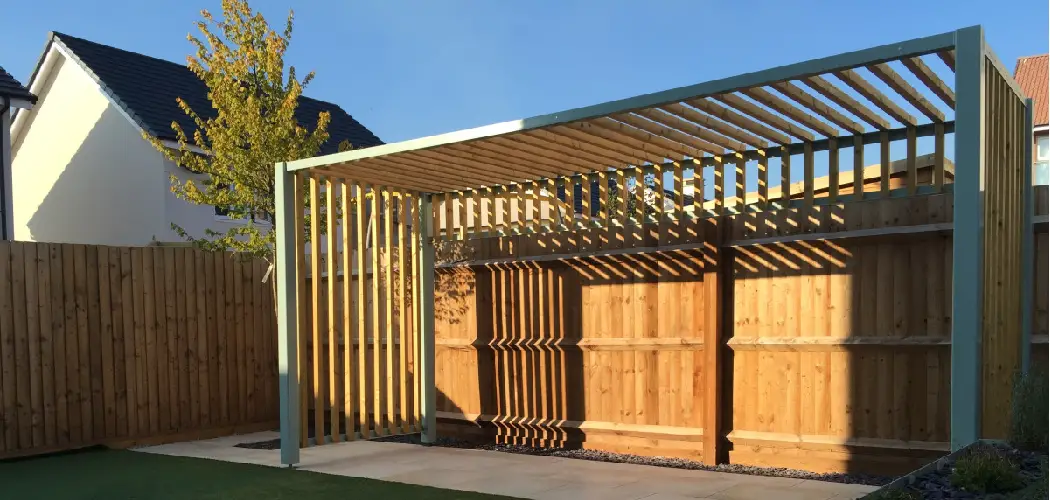A well-designed patio cover can transform your outdoor space into a shaded oasis, providing comfort and protection from the elements. While many homeowners opt for patio covers attached to their houses, there are situations where a freestanding patio cover makes more sense.
Whether you have a detached garage, a separate outdoor living area, or simply want to create an independent, standalone structure, building a patio cover not attached to your house is a rewarding DIY project that can enhance your property’s aesthetics and functionality.
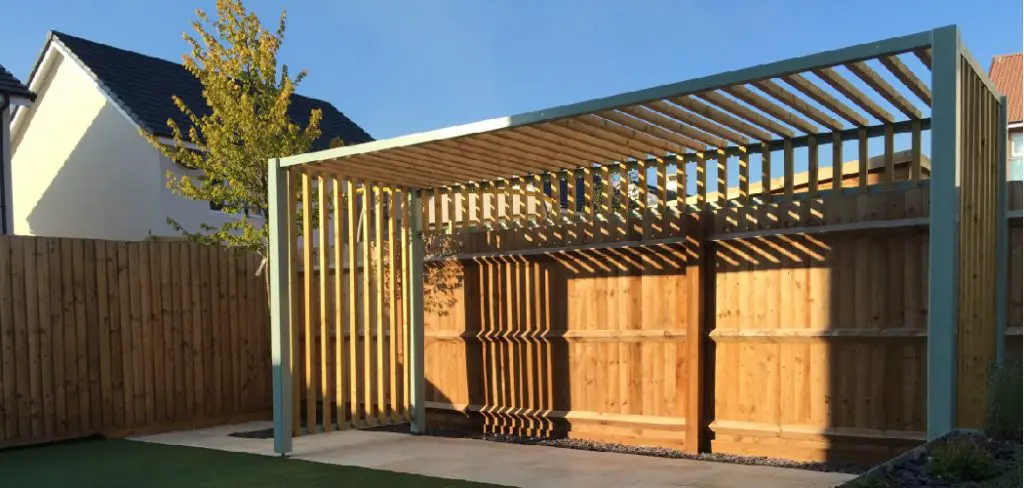
In this guide, we’ll explore how to build patio cover not attached to house. We’ll discuss the materials and tools you’ll need, the design options available, and the key factors to keep in mind, such as local building codes and permits. By the end of this article, you’ll be well-equipped with the knowledge to embark on this project, allowing you to create a stylish and functional space to enjoy the great outdoors, independent of your home’s structure.
Importance of a Patio Cover
A patio cover is a great addition to any home. Not only does it provide much needed shade and protection from the elements, but it also adds value and aesthetic appeal to your property. Whether you plan on using your patio for outdoor dining, entertaining guests, or simply as a peaceful retreat, a well-built patio cover can enhance your overall outdoor living experience.
One of the main benefits of a patio cover is its ability to provide shade. Not only does this make your outdoor space more comfortable, but it also helps protect you and your furniture from harmful UV rays. This can be especially important during the hot summer months when spending extended periods of time in direct sunlight can lead to sunburns and other health concerns.
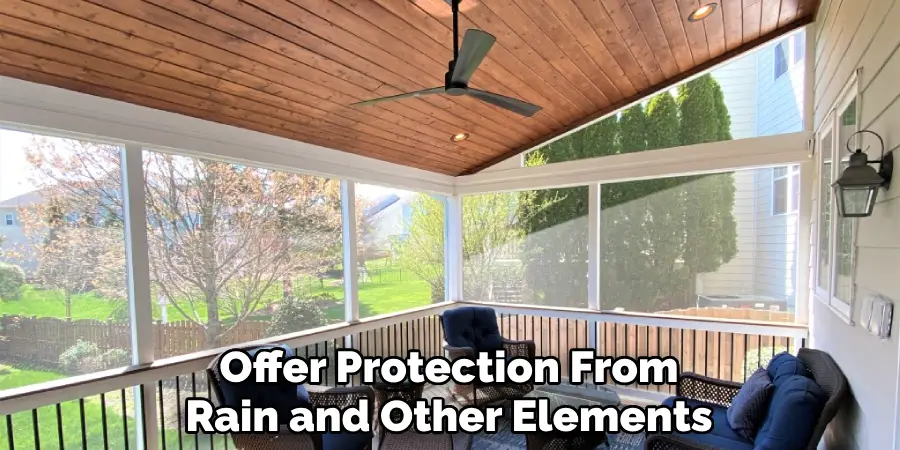
Additionally, patio covers offer protection from rain and other elements. This allows you to enjoy your outdoor space even when the weather isn’t ideal. You can still barbeque, relax, or read a book outside without worrying about getting wet or having to move everything indoors.
But it’s not just about practicality – patio covers can also add visual appeal to your home. They come in a variety of styles and materials, so you can choose one that best fits your personal taste and complements the existing architecture of your home. Some popular options include wood, aluminum, and vinyl patio covers.
Furthermore, a well-built patio cover can increase the value of your property. Not only does it add usable square footage to your home, but potential buyers may also see it as a desirable feature when considering purchasing your home. This can be particularly beneficial if you ever decide to sell your house in the future.
10 Methods How to Build Patio Cover Not Attached to House
1. Wood Patio Cover
A wood patio cover is a great way to provide shade and shelter to your outdoor living space. This type of cover is typically made from pressure-treated lumber or cedar, which are both durable and attractive materials. When building a wood patio cover, you will need to attach it to the house with lag screws or bolts for stability. Additionally, you may need to secure the structure with posts in the ground or concrete footings if it is large enough.
2. Aluminum Patio Cover
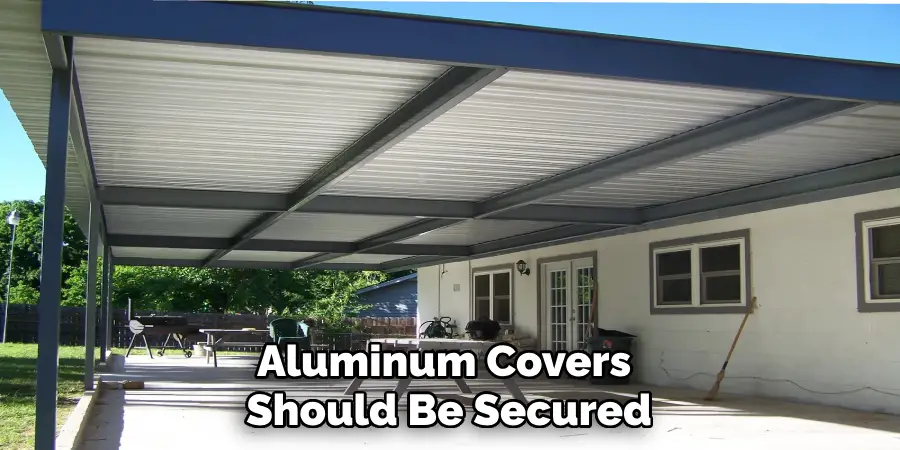
An aluminum patio cover is an excellent choice for those looking for a lightweight and durable option that won’t require much maintenance over time. Aluminum covers come in a variety of styles and colors, so you can easily find one that matches your home’s exterior design. Like wood covers, aluminum covers should be secured with posts in the ground or concrete footings if they are large enough.
3. Fabric Patio Cover
A fabric patio cover is an affordable option that can provide some protection from the sun and rain while still allowing plenty of light into your outdoor living space. Fabric covers come in many different styles and colors, so you can easily find one that complements your home’s exterior design. These covers are typically attached to the house with hooks or screws, but they do not require any additional support other than this simple installation method.
4. Vinyl Patio Cover
Vinyl patio covers are another great option for those looking for an easy-to-install solution that doesn’t require any additional support structures like posts or footings. Vinyl covers are available in many different styles and colors, so you can easily find one that matches your home’s exterior design. These covers should be attached to the house with lag screws or bolts for stability, but no additional support is required beyond this simple installation method.
5. Retractable Awning
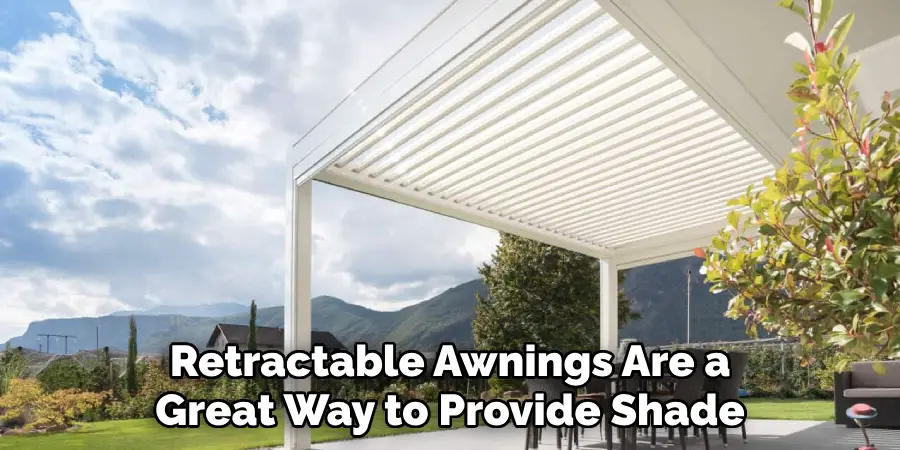
Retractable awnings are a great way to provide shade when needed without having to install a permanent structure on your property. These awnings come in many different styles and colors, so you can easily find one that complements your home’s exterior design. Retractable awnings should be securely attached to the house with lag screws or bolts for stability, but no additional support structures are required beyond this simple installation method.
6. Canopy
Canopies are another popular option for those looking for an easy-to-install solution that doesn’t require any additional support structures like posts or footings. Canopies come in many different styles and colors, so you can easily find one that matches your home’s exterior design. These covers should be securely attached to the house with lag screws or bolts for stability, but no additional support is necessary beyond this simple installation method.
7. Gazebo
Gazebos are freestanding structures that provide shade and shelter without having to attach anything directly to your house. Gazebos come in many different shapes and sizes, so you can easily find one that fits within your budget. To ensure stability, gazebos must be secured into the ground using either concrete footings or metal stakes. Additionally, most gazebos will also require some type of roofing material, such as asphalt shingles, metal sheets, or fabric panels.
8. Pergola
A pergola is similar to a gazebo in that it provides shade and shelter without having to attach anything directly to your house. Pergolas typically consist of four columns supporting two beams which then hold up rafters across them. To ensure stability, pergolas must also be secured into the ground using either concrete footings or metal stakes. Additionally, most pergolas will also require some type of roofing material, such as asphalt shingles, metal sheets, or fabric panels.
9. Shade Sails
Shade sails offer an attractive alternative to traditional patio covers as they provide plenty of coverage while still allowing natural light into your outdoor space. Shade sails come in many shapes, sizes, and colors, so you can easily find one that matches your home’s exterior design. To ensure stability, these sails must be securely attached at all four corners by either drilling into walls/fences/posts (if applicable) or by using strong anchors such as sandbags/water barrels filled with concrete/sand/water etc.
10. Treehouse / Playhouse Structure
If you have children at home who enjoy playing outdoors, then why not consider building them their own treehouse/playhouse structure? This type of structure would not only provide plenty of coverage.
Advantages of a Detached Patio Cover
A detached patio cover, also known as a freestanding patio cover, is a structure that is not attached to the main house or any other building. It is a popular choice for homeowners who want to create an outdoor space without making any structural changes to their home. In this section, we will discuss some of the advantages of having a detached patio cover.
Versatility
One of the biggest advantages of a detached patio cover is its versatility. Since it is not attached to the house, it can be built in various shapes and sizes, depending on your preference and available space. You can also choose from a variety of materials, such as wood, aluminum, or vinyl, to match your home’s aesthetics.
Flexibility
A detached patio cover offers a lot of flexibility in terms of design and placement. You can position it anywhere on your property, depending on where you want to create an outdoor living space. It also gives you the freedom to add additional features like a fireplace, outdoor kitchen, or seating area without any limitations.
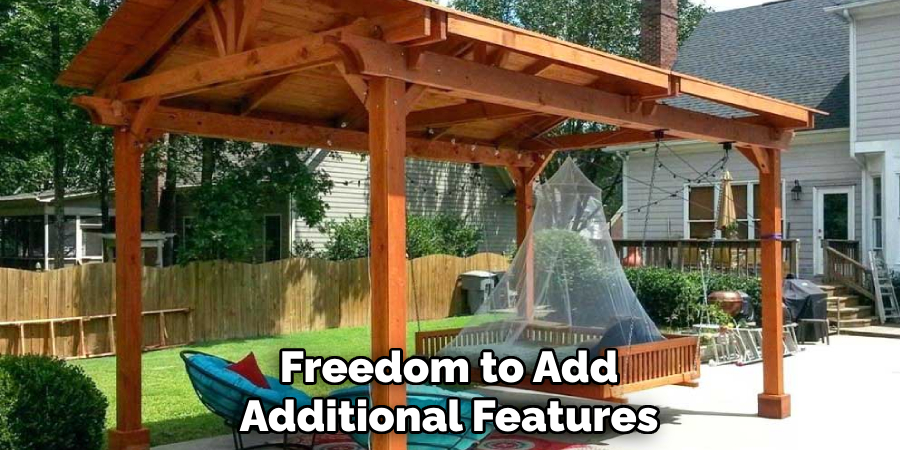
Cost-Effective
Building a detached patio cover is usually more cost-effective compared to an attached one. Since it is a separate structure, you don’t have to worry about any additional construction costs or the need for expensive materials to match your home’s existing design.
Easy Maintenance
A detached patio cover is also easier to maintain as it is not directly connected to your house. Any repairs or maintenance work can be done without disrupting the main structure of your home. This also means that any potential damage to the patio cover will not affect your house, providing an added layer of protection.
Conclusion
Building a patio cover that is not attached to the house is a relatively simple process and a great way to bring an outdoor oasis to your home. Whether you are installing a traditional wood-frame roof or alternative roofing materials, these steps should give you the direction you need to create your ideal outdoor space. Additionally, you can even enjoy the fruits of your labor by taking on some DIY projects such as painting with exterior paint or adding lights for nighttime gatherings.
Now that you know how to build patio cover not attached to house, it’s time to make this project into a reality and begin construction! So, grab the necessary materials and tools, do some pre-planning, follow these straightforward instructions and start creating an unforgettable atmosphere for your outdoor haven.

